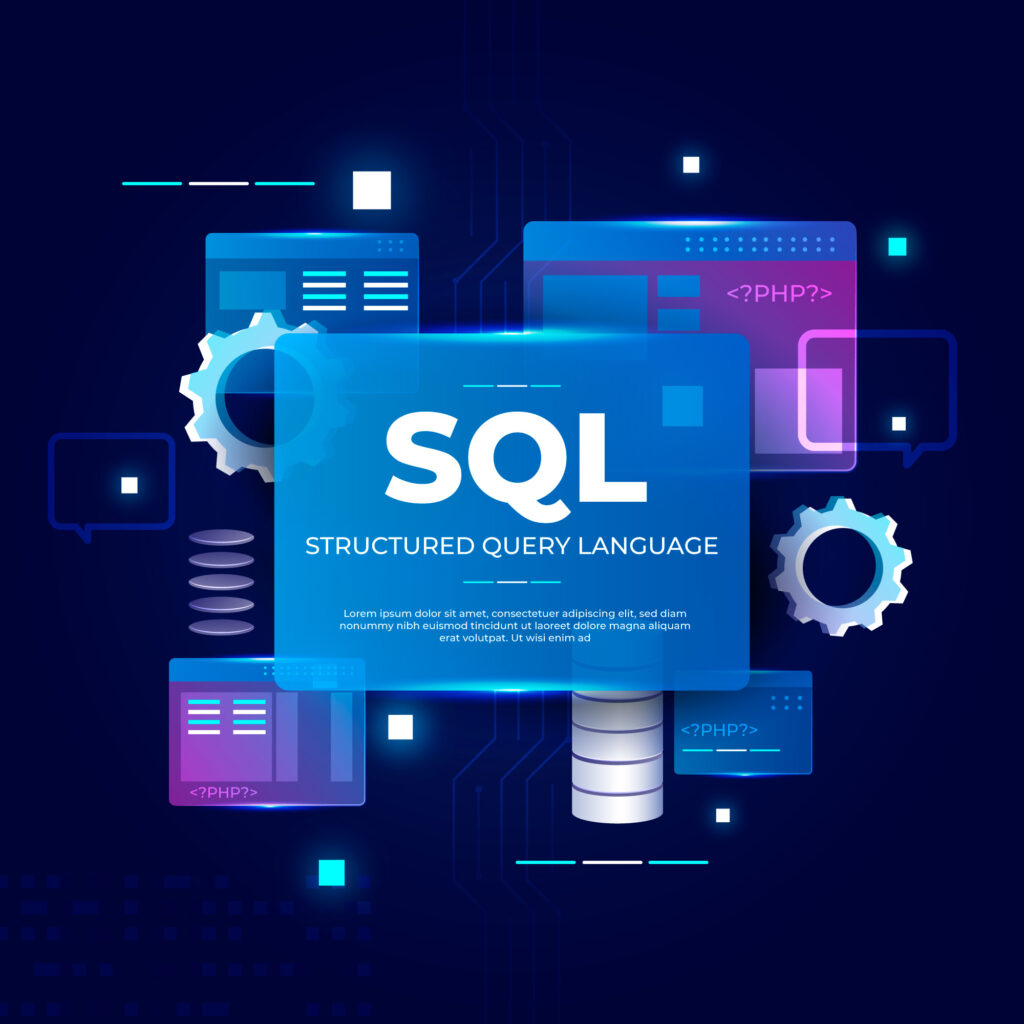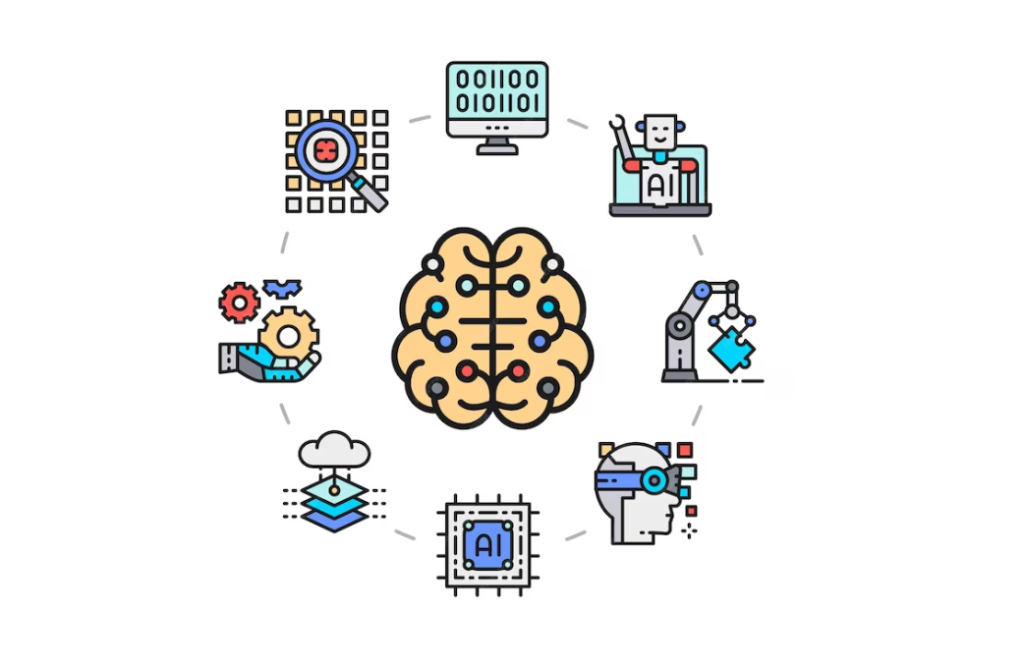Table of Contents
Databricks can be complex, but we’re here to make it easier. This article will provide a comprehensive overview of Databricks, covering its capabilities and the type of users who can benefit from it. We will also address frequently asked questions, such as “What is a data lakehouse?” and “Why is it important to be certified in Databricks?” We hope this will help you better understand Databricks and its significance in data analytics.
What is Databricks?
Databricks is a comprehensive cloud-based solution that addresses all your data needs. It offers more than just basic functionality; it creates a collaborative ecosystem for your entire data team.
With Databricks, you can easily manage extensive datasets thanks to its speed, cost efficiency, and scalability. It seamlessly integrates with your current cloud setup, whether Amazon Web Services (AWS), Microsoft Azure, Google Cloud, or a combination of multiple clouds.
What is Databricks Used For?
Organizations often operate with a complex mix of data lakes and warehouses, utilizing parallel pipelines to process data in scheduled batches or real-time streams. Additionally, they layer on top of various other tools for analytics, business intelligence, or data science.
However, with Databricks, there’s no need for all of these. Instead, you can use Databricks to:
- Consolidate all your data into one location
- Easily manage both batched and real-time data streams
- Organize and transform data
- Perform calculations on data
- Query and analyze data
- Utilize data for machine learning and AI
- Generate reports to present results to your business
This idea of consolidating all data into one place and using it for various purposes is called the “data lakehouse.”
Alternatively, you can use Databricks for specific activities and combine them with other technologies within your cloud data system. This approach is often useful to test and assess the capabilities of Databricks.
Who Uses Databricks?
Databricks is a versatile platform that caters to a wide range of users, from small businesses to large enterprises and everything in between. Renowned companies worldwide, such as Coles, Shell, Microsoft, Atlassian, Apple, Disney, and HSBC, trust Databricks to quickly and efficiently meet their data requirements.
It offers a wide range of functions and high-performance capabilities, making it an essential tool for various roles within a data team, including data engineers, analysts, business intelligence professionals, data scientists, and machine learning engineers.
So, What is Databricks, and What do People Use it for?
Databricks Processes Data
Databricks is a versatile platform that handles ETL/ELT tasks, such as reading, writing, transforming, and processing data. Mastering these tasks is the backbone of data manipulation, and once you do, you can easily handle any data-related job.
Data processing involves many tasks, including aggregations, data linking, and machine learning.
Databricks Utilizes Apache Spark for Data Processing.
Apache Spark, an open-source marvel, is at the heart of Databricks, making it a powerhouse for data processing. This connection is no coincidence, as Spark is the go-to data processing tool in big data, and the minds created Databricks behind Spark.
You might wonder why you should use Databricks when you can use Spark. The answer is simple: running Spark requires setting up a cluster of computers, each with its memory and multiple cores, working in tandem.
This distributed and parallel setup is essential for handling large data volumes and future scalability. However, managing clusters and fine-tuning Spark configurations can be a headache, diverting your focus from actual data processing.
That’s where Databricks comes in. It removes the hassle by allowing you to define your cluster preferences and handle everything else effortlessly. Clusters materialize when required and disappear when idle.
Spark comes pre-installed and configured with auto-scaling capabilities within the limits you set. This means less worrying about infrastructure and more time devoted to value-generating data processing.
The beauty of Databricks doesn’t end there. It optimizes both Spark and its clusters, ensuring superior speed and efficiency. It’s not just data processing; it’s data processing at its best. But here’s the real magic – Databricks transforms this potent core into a comprehensive data platform.
How is Databricks Unlike Regular Databases or Data Warehouses?
Data processing requires different tools depending on the task at hand. Databases and data warehouses are designed for quick responses to queries on smaller datasets. Databricks, however, is optimized for high-throughput data processing, making it an excellent choice for super-efficient transformations and calculations, especially as data scales up.
To further boost query performance, Databricks incorporates Photon, an engine that works seamlessly with Spark. Spark and Photon together cover the entire spectrum of data processing. However, there is a significant difference between Databricks and databases or data warehouses regarding how and where your data is stored.
Databricks Data Control: Your Storage, Your Way
A database or data warehouse processes your data using its query engine and stores it in its format. You can only access that data by using the database or data warehouse. And in some cases, once you put your data in there, you need to pay to read that data out.
Databricks don’t store data. (Granted, there are some subtleties here. But this statement and the following holds when implementing Databricks using best practices.)
Databricks reads data from storage and writes data to storage, but that storage is your own — depending on your cloud of choice, your data will be in Amazon S3, Azure Data Lake Storage Gen2 or Google Cloud Storage.
Databricks doesn’t require a proprietary data storage format; it uses open-source formats and can also read from and write to databases. The choice is yours.
The net result is that you always have full control of your data. You know exactly where it is and how it is stored. You’re not locked in either: if you want to access your data without using Databricks, then you can.
Databricks Blends Your Data Lake and Warehouse Into the Data Lakehouse.
Cloud storage is great for creating a data lake but needs more guarantees and robustness. Databricks Delta Lake addresses this by adding ACID compliance and transaction logs to ensure data operations are recorded and accessible in a familiar Parquet format.
It supports batch and real-time data, schema enforcement or modification, and ‘time travel’ to access older data versions. Databricks transforms your data lake into a data warehouse-like structure, offering both advantages, and this fusion is known as the ‘data lakehouse.’
While Spark and Delta Lake Play Vital Roles, Databricks Extends Beyond These Essential Components.
Databricks offers a wide range of features for data utilization, including Spark and Delta Lake. It allows users to create clusters with machine learning packages and GPUs and provides interactive notebooks for data scientists and ML engineers. Databricks Machine
Learning further enhances the ‘MLOps’ lifecycle with integrated open-source software, MLflow. Databricks SQL delivers a user-friendly interface for SQL queries and traditional system interactions. Additionally, users can create visuals, reports, and dashboards or integrate Databricks with other BI tools such as Power BI, Tableau, or Looker.
Databricks Operates in the Cloud.
Databricks offers seamless integration with popular cloud platforms such as Amazon Web Services (AWS), Microsoft Azure, Google Cloud, or a combination of these in a multi-cloud setup. It should be noted that Databricks is exclusively designed for cloud environments, and it does not operate on-premises.
Within the cloud infrastructure, Databricks relies on cloud providers for:
- Compute Clusters: In AWS, these are EC2 virtual machines; in Azure, they’re Azure VMs; and in Google Cloud, the clusters run in Google Kubernetes Engine.
- Storage: Databricks uses native cloud storage solutions. AWS uses S3, Azure uses Azure Data Lake Storage Gen2, and Google Cloud uses Google Cloud Storage.
- Networking and Security: Securely integrating networks, managing access, and safeguarding secrets.
Databricks is a standalone platform that offers the flexibility to connect with other cloud-native tools. Once deployed, your team can access the Databricks workspace through its browser interface, eliminating the need to navigate cloud consoles. The team can work within Databricks without worrying about underlying cloud details.
Databricks is a Single Data Platform for All Your Needs.
Databricks is a powerful, all-in-one cloud-based solution catering to all your data needs. It embodies the idea of a data lakehouse and serves as the central hub for data science and machine learning projects.
Databricks is the ultimate toolkit for your entire data team, acting as a Swiss army knife for data handling. It facilitates seamless collaboration, simplifies complex data systems, and can easily handle diverse data sources.
Known for its speed, cost-effectiveness, and innate scalability, Databricks can easily handle vast amounts of data. Once architected effectively, it becomes a platform that can effortlessly scale to match your ever-changing requirements.
In What Data Domains Can Databricks Provide Support?
Databricks provides three layers for effective data work: data engineering, SQL, and Machine Learning.
Data Engineering
Databricks’ data engineering layer uses Apache Spark to optimize high-performance data transportation and transformation, supporting streaming and batch data processing. Delta Lake format ensures ACID transactions, preserving data integrity.
Databricks integrates with popular programming languages like SQL, Python, Scala, Java, and R, and transformation is carried out through Spark and Delta Live Tables (DLT). Once loaded into Delta Lake tables, data is accessible for analytical and AI applications.
Databricks SQL

Databricks SQL simplifies running SQL queries on data lakes, creating data visuals and sharing insights. It integrates with tools like Tableau and Power BI, providing the most comprehensive and recent data.
It operates on actively managed servers, delivering six times faster processing than traditional data warehouses. It offers instant computing with minimal management overhead and cost and executes data fetching in parallel, eliminating bottlenecks.
Databricks Machine Learning and Data Science

Unlike traditional big data clusters that are often rigid and inflexible, the Databricks Machine Learning platform allows experimentation and innovation, which is crucial in discovering new insights. This comprehensive platform integrates various services such as model management, experiment tracking, feature development, and model serving.
With Databricks Machine Learning, users can easily train models, monitor them through experiments, generate feature tables, and efficiently share, manage, and serve models. The platform also offers Databricks Runtime for Machine Learning, which includes popular machine learning libraries such as TensorFlow, PyTorch, Keras, and XGBoost, as well as essential libraries for software frameworks like Horovod.
Exploring Databricks Users and Applications
Databricks is a popular platform that caters to a broad range of users and organizations, including Fortune 500 companies, government agencies, and academics. It has been adopted by renowned organizations such as Coles, Shell, ZipMoney, Health Direct, Atlassian, and HSBC to complete big data tasks quickly and seamlessly. For instance, Shell uses Databricks to monitor data from two million petrol station valves, which helps predict potential issues.
The National Health Services Directory in Australia depends on Databricks to maintain data quality, reliability, and integrity, which helps in analytics and enhances clinical outcomes. Coles has adopted Databricks as its central processing technology. It has helped reduce model training jobs from three days to three hours.
What is Data Lakehouse?
Databricks offers a data lakehouse, combining a data warehouse’s structured approach with a data lake’s flexibility. It stores raw data in its original format and supports various data types, making it an ideal environment for investigation and refinement.
The data lakehouse supports ACID transactions, has schema support for structured data, and is scalable to meet different workload requirements, which is essential for machine learning, analytics, and data science.
Databricks provides a user-friendly platform for developing, testing, and deploying machine learning and analytics applications, making data analysis approaches more compelling and adaptable today.
What is Databricks Certification

Achieving a Databricks certification recognises your expertise in the Databricks platform. Databricks offers courses catering to different roles and responsibilities within the platform to help you prepare for their certificates.
Whether you’re just starting or looking to deepen your skills, Databricks offers boot camps and various events to assist you in getting started. Databricks Academy, the official training arm, offers tailored learning paths for diverse roles and careers.
These paths cover everything from mastering the fundamentals of the Databricks Lakehouse to obtaining certifications as a data scientist. The Academy provides comprehensive e-learning and corporate training certifications, ensuring that individuals, whether business leaders or SQL analysts, can enhance their proficiency in data and analytics.
Additionally, Databricks Academy provides free training vouchers to partners and customers. The duration to prepare for a Databricks Certification varies, and having a set exam deadline can add motivation and focus to your study plan. Typically, a 5-7 week preparation is recommended, especially if you already have experience with Apache Spark.
In conclusion
Dive into the future of data with Databricks, where precision meets processing, innovation sparks analytics, and insights are accelerated by machine learning. Join the data revolution and start your journey to mastery today! Ready to elevate your expertise?
Begin your Databricks certification now and become the architect of tomorrow’s data landscape. Unleash the full potential of your data and harness its power to create a legendary data story that will transform your business.
